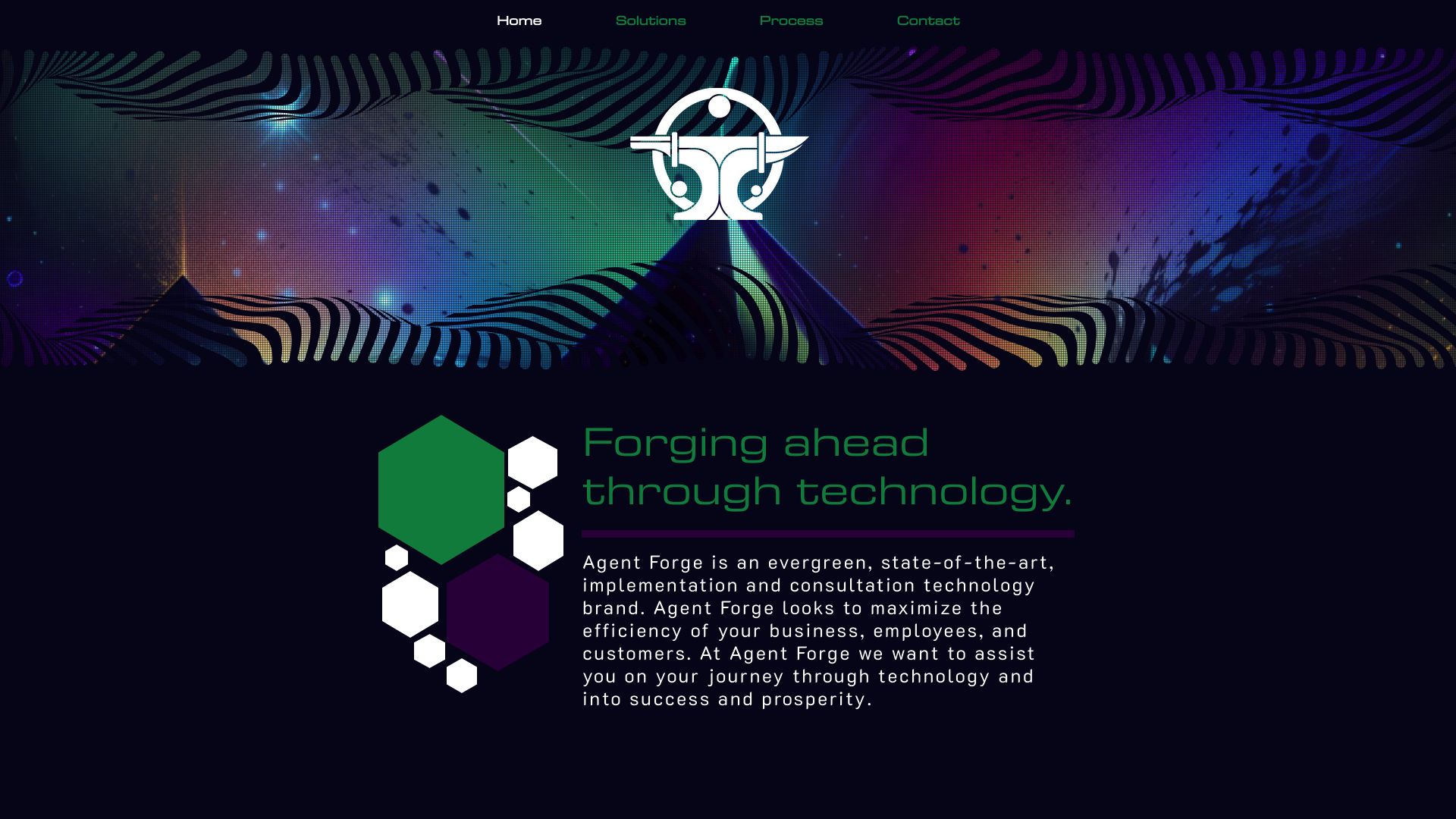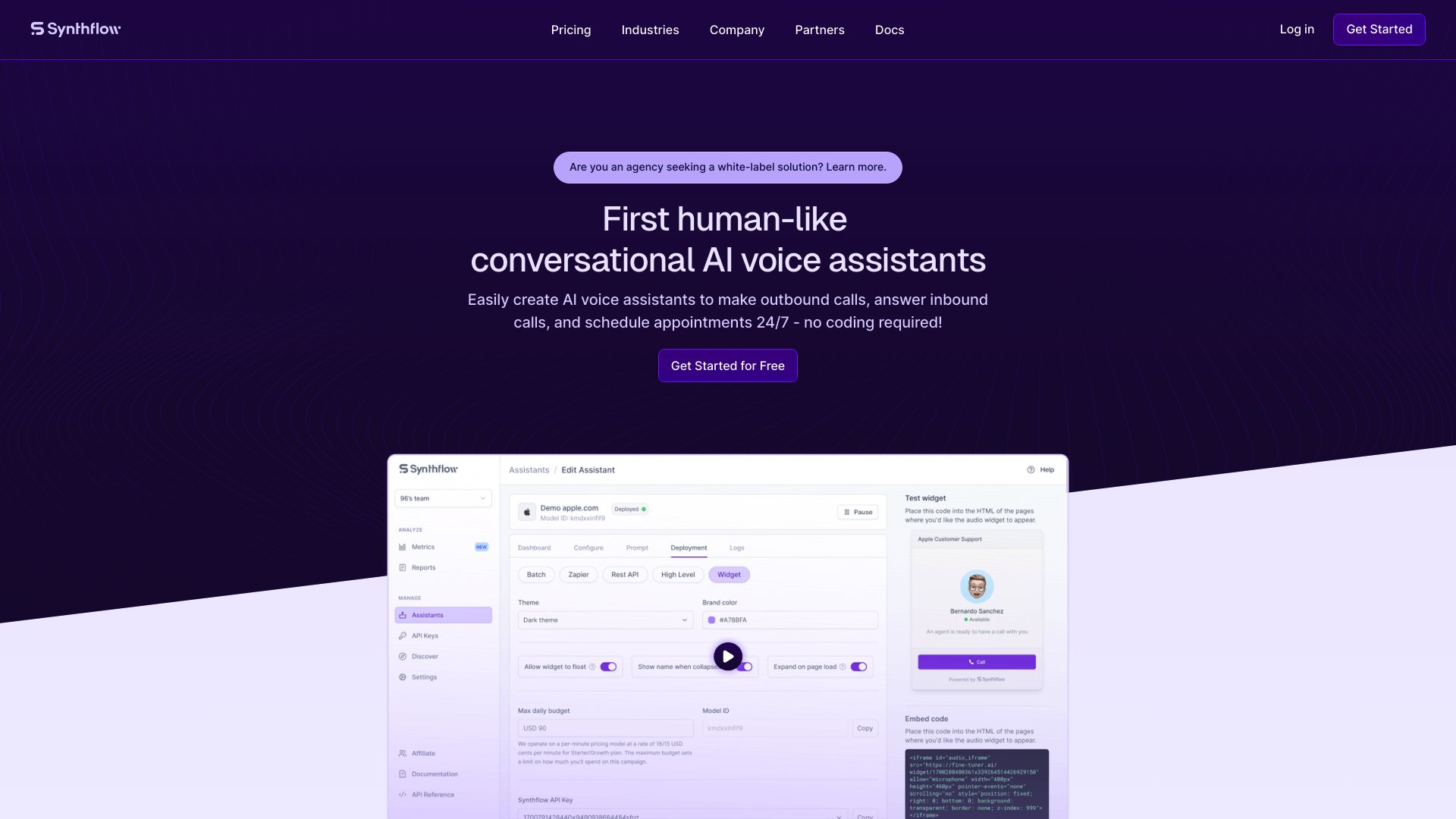Agent Forge vs. Synthflow: Comparing AI Development Platforms
AI agent development platforms revolutionize how businesses create intelligent systems. Agent Forge vs. Synthflow offer unique approaches to this challenge, each with distinct strengths. Agent Forge provides a flexible, code-based framework for custom AI agents, while Synthflow focuses on no-code voice assistant creation.
This comparison explores their key features, use cases, and limitations to help you choose the right tool for your AI development needs. We’ll also introduce SmythOS, a comprehensive platform that combines powerful capabilities with user-friendly design, offering a compelling alternative for businesses seeking scalable, versatile AI solutions.
Agent Forge Overview
Agent Forge empowers developers to build autonomous AI agents and cognitive architectures using Python. This open-source framework accelerates the creation of intelligent systems capable of automating tasks and enhancing workflows across industries.
Agent Forge’s strength lies in its flexibility and broad model support. Developers can harness popular large language models like GPT and Claude, or deploy self-hosted options via Oobabooga. The framework’s modular design facilitates rapid prototyping and iteration of AI agents for diverse applications – from chatbots and virtual assistants to complex automated workflows.
Agent Forge’s strength lies in its flexibility and broad model support. Developers can harness popular large language models like GPT and Claude, or deploy self-hosted options via Oobabooga.


Key features include customizable agent memory management using ChromaDB, multi-agent orchestration capabilities, and pre-built templates to jumpstart development. Agent Forge also provides a robust prompt engineering system to fine-tune agent behavior and seamless integration with third-party APIs and data sources.
While Agent Forge offers powerful tools for AI development, it lacks some features found in more comprehensive platforms. The absence of a visual builder or no-code editor means users need coding experience to fully leverage its capabilities. Additionally, the framework doesn’t provide built-in explainability tools or a debug mode, which could present challenges when troubleshooting complex agent behaviors.
Agent Forge positions itself as an accessible playground for AI experimentation and development. Its modular architecture and extensive customization options make it well-suited for long-term AI projects, particularly for teams with technical expertise. However, organizations seeking a more user-friendly, out-of-the-box solution may find alternative platforms better aligned with their needs.
Synthflow Overview
Synthflow empowers businesses to create AI voice assistants without coding expertise. The platform’s no-code interface and pre-built templates allow users to deploy customized AI agents for tasks like customer support, lead generation, and appointment scheduling.


Synthflow stands out with its focus on voice-based AI assistants and emphasis on data security. The platform offers unlimited secure storage in a dedicated Pinecone environment, ensuring users maintain control over their AI agents’ data. This commitment to privacy and compliance makes Synthflow attractive for businesses handling sensitive information.
Synthflow empowers businesses to create AI voice assistants without coding expertise. The platform’s no-code interface and pre-built templates allow users to deploy customized AI agents…
Key features include customizable AI personalities, integration with third-party tools like 11Labs and Twilio, and deployment options through GoHighLevel, Zapier, REST API, and website widgets. Synthflow supports both batch deployments for large-scale campaigns and real-time interactions via website chat widgets, offering flexibility for various business needs.
While Synthflow excels in creating voice assistants, it lacks some advanced features found in more comprehensive AI agent builders. The platform doesn’t offer multimodal capabilities, debug tools, or support for complex problem-solving tasks. Additionally, there’s no mention of features like audit logs, team collaboration tools, or advanced security measures such as OAuth and IP control.
Synthflow’s vision centers on democratizing AI technology for businesses of all sizes. By providing an accessible platform for creating voice assistants, Synthflow aims to streamline customer interactions and boost operational efficiency across industries. However, users seeking more advanced AI agent capabilities or extensive customization options may find the platform’s focus on voice assistants limiting for certain use cases.
Feature Comparison
Agent Forge and Synthflow offer distinct approaches to AI agent development, each with unique strengths and limitations. Agent Forge provides a flexible, code-based framework for building custom AI agents, while Synthflow focuses on creating voice assistants through a no-code interface.
Agent Forge excels in its support for multiple large language models and customizable agent memory management. Developers can leverage popular models like GPT and Claude or deploy self-hosted options. The framework’s modular design facilitates rapid prototyping and iteration, making it ideal for complex AI projects requiring fine-tuned control. However, Agent Forge lacks visual building tools and requires coding expertise, potentially limiting accessibility for non-technical users.
In contrast, Synthflow prioritizes ease of use with its no-code platform for voice assistant creation. This approach makes AI development more accessible to businesses without extensive technical resources. Synthflow’s emphasis on data security, with unlimited secure storage in a dedicated Pinecone environment, addresses privacy concerns crucial for many industries. However, Synthflow’s focus on voice assistants may restrict its applicability for users seeking more diverse AI agent capabilities.
| Agent Forge | Synthflow | SmythOS | |
|---|---|---|---|
| CORE FEATURES | |||
| Visual Builder | ❌ | ✅ | ✅ |
| No-Code Options | ❌ | ✅ | ✅ |
| Explainability & Transparency | ❌ | ✅ | ✅ |
| Debug Tools | ❌ | ✅ | ✅ |
| Multimodal | ❌ | ❌ | ✅ |
| Audit Logs for Analytics | ❌ | ✅ | ✅ |
| Work as Team | ❌ | ✅ | ✅ |
| Bulk Work | ❌ | ✅ | ✅ |
| Agent Work Scheduler | ❌ | ✅ | ✅ |
| Logs & Monitoring | ❌ | ✅ | ✅ |
| SECURITY | |||
| Constrained Alignment | ❌ | ✅ | ✅ |
| Data Encryption | ❌ | ✅ | ✅ |
| OAuth | ❌ | ✅ | ✅ |
| IP Control | ❌ | ❌ | ✅ |
| COMPONENTS | |||
| Foundation AIs | ❌ | ✅ | ✅ |
| Huggingface AIs | ❌ | ❌ | ✅ |
| Zapier APIs | ❌ | ✅ | ✅ |
| All other APIs, RPA | ❌ | ✅ | ✅ |
| Classifiers | ❌ | ❌ | ✅ |
| Logic | ❌ | ✅ | ✅ |
| Data Lakes | ❌ | ❌ | ✅ |
| DEPLOYMENT OPTIONS (EMBODIMENTS) | |||
| Deploy as API | ❌ | ✅ | ✅ |
| Deploy as Webhook | ❌ | ✅ | ✅ |
| Staging Domains | ❌ | ❌ | ✅ |
| Production Domains | ❌ | ❌ | ✅ |
| API Authentication (OAuth + Key) | ❌ | ✅ | ✅ |
| Deploy as Site Chat | ❌ | ✅ | ✅ |
| Deploy as Scheduled Agent | ❌ | ✅ | ✅ |
| Deploy as GPT | ❌ | ✅ | ✅ |
| Scalability | ❌ | ✅ | ✅ |
| DATA LAKE SUPPORT | |||
| Hosted Vector Database | ❌ | ✅ | ✅ |
| Sitemap Crawler | ❌ | ✅ | ✅ |
| YouTube Transcript Crawler | ❌ | ✅ | ✅ |
| URL Crawler | ❌ | ❌ | ✅ |
| PDF Support | ✅ | ❌ | ✅ |
| Word File Support | ❌ | ❌ | ✅ |
| TXT File Support | ✅ | ❌ | ✅ |
Best Alternative to Agent Forge and Synthflow
SmythOS stands out as the superior alternative to Agent Forge and Synthflow for AI agent development and deployment. Our platform combines the best of both worlds, offering the flexibility and power of Agent Forge with the user-friendliness of Synthflow, while surpassing both in key areas.
Unlike Agent Forge’s code-heavy approach, SmythOS provides a visual drag-and-drop interface that makes AI agent creation accessible to users of all skill levels. This intuitive design doesn’t sacrifice power — we support a wide range of AI models and integrations, allowing for complex workflows and multi-agent systems that rival Agent Forge’s capabilities.
SmythOS provides a visual drag-and-drop interface that makes AI agent creation accessible to users of all skill levels. This intuitive design doesn’t sacrifice power…
Where Synthflow focuses narrowly on voice assistants, SmythOS enables the creation of diverse AI agents for any use case. Our platform supports multimodal interactions, including text, voice, and visual data, opening up possibilities far beyond simple chatbots. We also offer robust API integrations and deployment options, allowing seamless incorporation of AI agents into existing business processes.
SmythOS excels in scalability and performance, critical factors that set us apart from both competitors. Our cloud-native architecture allows effortless scaling from small prototypes to enterprise-level deployments. We also prioritize security and compliance, with features like data encryption and OAuth support that match or exceed Synthflow’s offerings.
By choosing SmythOS, users gain access to a comprehensive ecosystem for AI development that combines ease of use with unmatched versatility and power. Whether you’re a solo developer, a growing startup, or an established enterprise, SmythOS provides the tools and flexibility to bring your AI visions to life quickly and efficiently.
Conclusion
Agent Forge, Synthflow, and SmythOS each offer unique approaches to AI agent development, catering to different needs and skill levels. Agent Forge provides a flexible, code-based framework ideal for developers seeking fine-grained control over AI agents. Synthflow focuses on creating voice assistants through a user-friendly, no-code interface, making AI accessible to businesses without extensive technical resources.
While both platforms have their strengths, SmythOS emerges as the superior choice for businesses and developers looking for a comprehensive, scalable AI solution. Our platform combines the best of both worlds – offering the flexibility and power of Agent Forge with the ease of use and accessibility of Synthflow, all while providing additional features and capabilities.
SmythOS stands out with its intuitive drag-and-drop interface, extensive integration ecosystem, and versatile deployment options. We support multi-agent collaboration, provide robust security measures, and offer unparalleled scalability. Our platform empowers users to create complex AI workflows without extensive coding knowledge, democratizing AI development across industries.
Experience the future of AI agent development with SmythOS. Create a free account today and explore our diverse range of AI-powered agent templates to jumpstart your projects. Whether you’re building chatbots, APIs, or complex automated workflows, SmythOS provides the tools and flexibility to bring your ideas to life. Discover how our 300,000+ integrations can revolutionize your tech stack and streamline your operations.
Last updated:
Disclaimer: The information presented in this article is for general informational purposes only and is provided as is. While we strive to keep the content up-to-date and accurate, we make no representations or warranties of any kind, express or implied, about the completeness, accuracy, reliability, suitability, or availability of the information contained in this article.
Any reliance you place on such information is strictly at your own risk. We reserve the right to make additions, deletions, or modifications to the contents of this article at any time without prior notice.
In no event will we be liable for any loss or damage including without limitation, indirect or consequential loss or damage, or any loss or damage whatsoever arising from loss of data, profits, or any other loss not specified herein arising out of, or in connection with, the use of this article.
Despite our best efforts, this article may contain oversights, errors, or omissions. If you notice any inaccuracies or have concerns about the content, please report them through our content feedback form. Your input helps us maintain the quality and reliability of our information.
